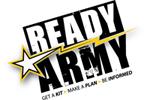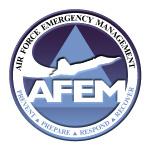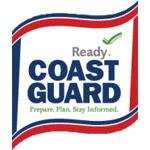Military Family Preparedness
Preparing Makes Sense for Military Families
Get the Video Embed code or
Download the Transcript here
As part of our nation's military, whether on active duty, reserves, civilian employee or family member, you play an important role in ensuring the welfare of our homeland. It is also important to prepare yourself and your family for all types of emergencies so you can increase your personal sense of security and peace of mind.
Each installation has a Readiness and Emergency Management Flight that provides emergency management education materials and briefings to the military and family members.
They coordinate and integrate all activities to build, sustain and improve the installation's ability to mitigate against, prepare for, respond to and recover from threatened or actual natural disasters, acts of terrorism or other man-made disasters.
Every military unit on the installation has an emergency management representative assigned to ensure the military members and their family members are informed of these actions.
The installation plan for emergency management is the Comprehensive Emergency Management Plan (CEMP) 10-2. Military members should ensure their family members are aware of the who, what, when, where and how actions prescribed in the CEMP 10-2 and supporting checklists.
Considerations for All Military Personnel & Families
- Every time you relocate, learn the types of emergencies likely to affect the area and update your emergency kit and plan with new materials if necessary.
- Be aware that mass warning systems differ at different locations. It could be a "Giant Voice" outside speaker, siren, telephone alert or some other system or procedures.
- You may not have extended family nearby, so a rendezvous point or call-in contact after an emergency may require more ingenuity. Establish an emergency plan with an out-of-town contact you can all reach. Keep in mind that one or more family members may be deployed when disaster strikes.
- If you live off base, threat levels or other circumstances may keep you from getting back on base for day-to-day activities following an emergency. Know alternative places to shop or obtain things you normally get on base.
- Collecting and recording important personal and financial documents is already a part of preparing for deployment. Be sure to include these documents in your family's emergency kit.
- During or after an emergency, you need to report to your command. Learn and follow the established procedures.
If You're Stationed Abroad
- The emergency number is probably not 9-1-1 and may differ on and off the installation. You and your family should know the operable numbers.
- Your emergency kit should include some additional items, such as passports, birth abroad certificates for children born overseas, cash in the local currency, a card with local translations of basic terms and an electrical current converter.
- If you live off base, learn a few key phrases in the host nation language and get to know neighbors who could alert you about an ongoing emergency.
- For an emergency that occurs "outside the fence," response (evacuations, shelter instructions, etc.) will be led by the local government. Cooperate with the host-nation responders and follow their instructions.
Army

Ready Army is an Army-wide campaign developed by the Headquarters Department of the Army and the Army Emergency Management Program to prepare the Army community, encourages soldiers, their families and Army civilians to build a kit, make a plan and be informed.
Prepare to Report
Following certain catastrophic events, the Secretary of the Defense may direct all DOD-affiliated people in the affected area to check in with their command for accountability. If Internet connectivity is available, check in online using the Army Disaster Personnel Accountability and Assessment System (ADPAAS).
ADPAAS enables Army officials to account for assigned personnel and their Family members and, if needed, provide assistance. ADPAAS links are also available at the Military One Source and Army One Source Web sites.
If you do not have Internet access or you do not receive other official reporting instructions, you may report your accountability status using any of the following methods:
- Through your chain of command
- By contacting any of the following approved call-centers:
Army Info Hotline: 1-800-833-6622
Army OneSource
Within CONUS: 1-800- 464-8107
Outside CONUS (Collect): 484-530-5980 (Toll-Free): 1-800-3429-6477
Hearing-impaired callers: 1-800-364-9188
Spanish-speaking callers:
1-888-732-9020
1-877-888-0727
1-877-255-7524
Web site address: http://www4.army.mil
Military OneSource
Within CONUS (24/7): 1-800-342-9647
TTY/TTD: 1-800-346-9188
Spanish-speaking callers:
1-877-888-0727
1-888-732-9020
1-877-255-7524
Web site address: www.militaryonesource.mil
Ready Army Resources & Links
- Emergency Preparedness for the Army Community Booklet (PDF-2 Mb) (download only, printed version not available through FEMA)
- Ready Army Family Emergency Plan Fact Sheet (PDF-387 Kb) (download only, printed version not available through FEMA)
Navy
Ready Navy is a Navy-wide emergency preparedness program initiated by Commander, Navy Installations Command (CNIC).
Prepare
Be informed—The Navy cannot reach you if it cannot find you. Self register in the Wide Area Alert Notification (WAAN) system. All Navy, including active duty and reserve, civil service, and contractor personnel with an NMCI or One Net user account are REQUIRED to register their office email address and phone number, at minimum, in the WAAN. Registering personal emergency contact information is also strongly encouraged.
Make a plan—Formalize your emergency preparations by completing a Ready Navy Family Emergency Plan so that everyone in the family understands what to do, where to go, and what to take in the event of an emergency.
Build a kit—Check off recommended items as you shop using the Ready Navy Emergency Kit List.
Muster
During or following a disaster, the Navy must be informed of your status and needs. The Navy requires you to muster or report your whereabouts with your command to ensure all members of the Navy Family* are accounted for.
To muster, follow your command's established procedures to report your status. If command or alternate command cannot be reached,
- Log in to the Navy Family Accountability and Assessment System (NFAAS)
- Family members will need their sponsor’s date of birth and social security number to log in.
- If a computer is not accessible, call the Navy Personnel Command Emergency Coordination Center (NPC ECC): 1-877-414-5358 or 1-866-297-1971 (TDD).
* All active duty Navy personnel, Navy reservists and their families (as listed in the DEERS database) and Navy Civilian employees, both Civil Service and nonappropriated funds employees (NAF/NEX) and their families, have a responsibility to properly account for their status following an incident.
Recover
If you or your family has been affected by a declared emergency and you need assistance, log in to NFAAS and report your needs. Follow these steps to ensure you receive proper recovery assistance from the Navy:
- Account, Update, and Verify: After mustering, verify that your contact information in NFAAS is correct and current.
- Fill out a Needs Assessment Survey*: Indicate what type of assistance you are seeking (e.g., housing, finance, legal).
- Manage Recovery Process: A Fleet and Family Support Center representative will contact you to help determine the appropriate response or assistance needed for your recovery efforts.
* Information provided in the survey will be used only by Navy professionals and subject matter experts to aid with recovery efforts. Details contained in the survey are confidential and will NOT be shared with anyone without permission.
Ready Navy Links & Resources
PDFs
- Ready Navy Emergency Kit (PDF-844 Kb)
- Ready Navy Family Emergency Plan (PDF-652 Kb)
- Ready Navy Kid’s Activity (PDF-3 Mb)
- Wide Area Alert Notification (WAAN) System Registration Instructions (PDF-633 Kb)
Air Force

Prepare to Report
Following certain catastrophic events, the Secretary of Defense may direct all people affiliated with the Department of Defense in the affected area to check in with their command for accountability. If Internet connectivity is available, check in online using the Air Force Personnel Accountability and Assessment System (AFPAAS).
AFPAAS enables Air Force officials to account for assigned personnel and their family members and, if needed, provide assistance. AFPAAS links are also available on Military OneSource.
Follow your command's established procedures to report your status. If a command or alternate command cannot be reached, perform the actions below:
- Log in to the AFPAAS website. Family members will need their sponsor's date of birth and Social Security number to log in.
- If a computer is not accessible, call the Air Force Personnel Readiness Cell at 1-800-435-9941, DSN 665-2020 or commercial at 1-210-565-2020.
* The following personnel have a responsibility to properly account for their status after an incident: all active duty Air Force personnel, Air Force Reservists and their family members (as listed in the Defense Enrollment Eligibility Reporting System, or DEERS, database) and Air Force civilian employees, both civil service and nonappropriated funds employees and their family members.
Recover
If you or your family has been affected by a declared emergency and you need assistance, log in to AFPAAS website, and assess your needs. Follow the steps below to ensure you receive proper recovery assistance from the Air Force:
- Account, Update and Verify: After reporting, verify that your contact information in AFPAAS is correct and current.
- Fill out a Needs Assessment Survey: Indicate what type of assistance you are seeking (e.g., housing, finance, legal). Information provided in the survey will be used only by Air Force professionals and subject-matter experts to aid with recovery efforts. Details contained in the survey are confidential and will NOT be shared with anyone without permission.
- Manage Recovery Process: A case manager may contact you based on the information provided in the survey. Together, you'll determine the appropriate response or assistance needs for your recovery efforts.
Coast Guard

Ready Coast Guard is a Coast Guard–wide campaign sponsored by the Headquarters Health, Safety, and Work-Life Directorate's Office of Work-Life. It is a proactive campaign to inform the Coast Guard community about relevant hazards and encourage them to have an emergency plan and kit. Through education and community awareness activities, the campaign encourages individuals and families to plan and prepare for all hazards.
Ready Coast Guard Resources & Links
- Coast Guard Ready web site
- Work-Life Resources
- Personal Readiness Plan (PRP) - organize and store your personal information and paperwork
- Legal Assistance



